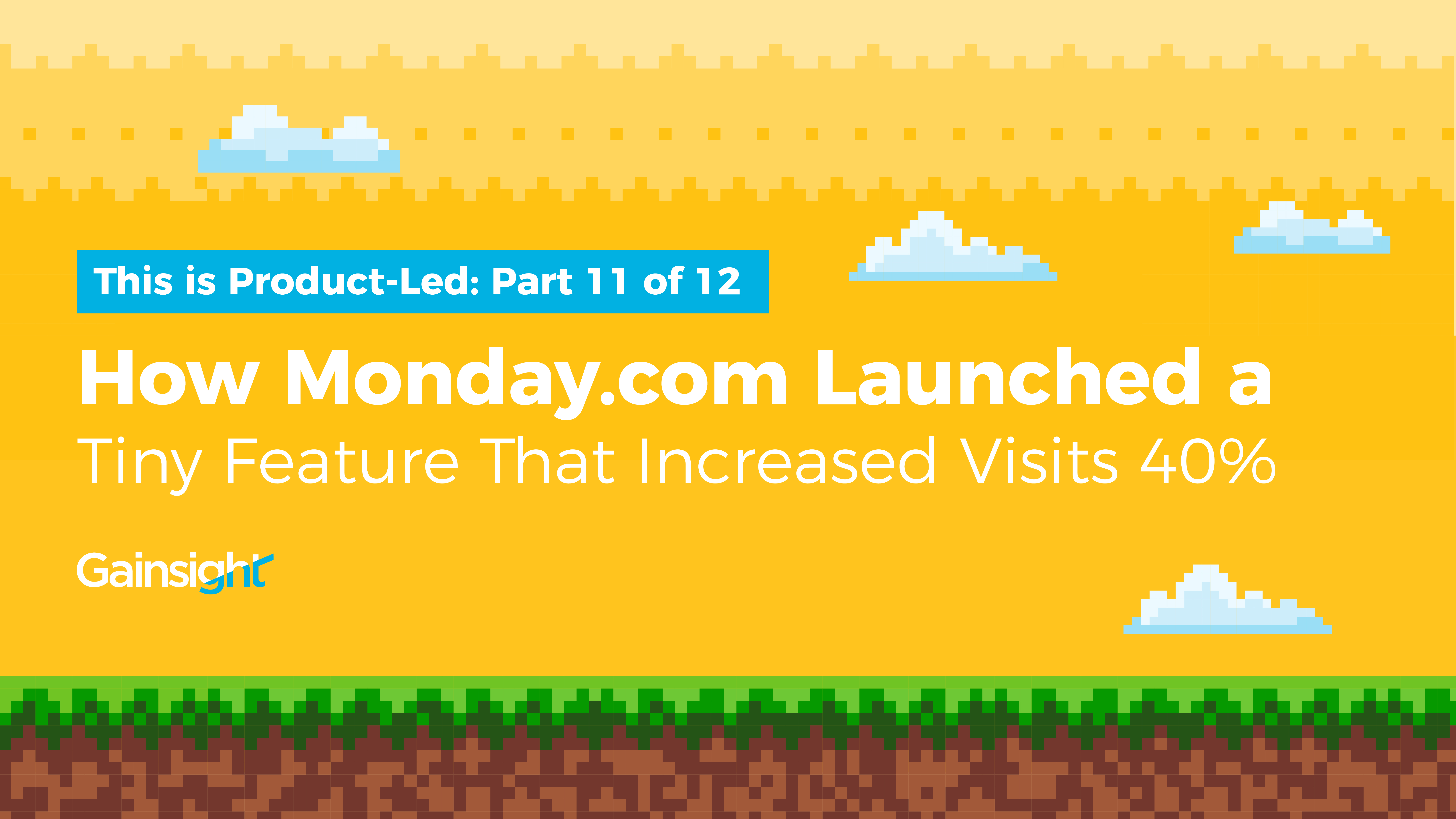This is part 11 of our 12-part series “This is Product-Led,” inspired by our conference for Gainsight PX users, Pulse for Product.
Today, in our quest to retire every video game reference possible as we explain our retro gaming-themed user summit, Pulse for Product, we have a special treat.
It’s actual footage of a customer success manager navigating the hurdles of submitting a feature request and getting it built. See below:

All jokes aside, success and product teams have never worked more closely than they do in 2020, but one large barrier often remains: They’re speaking different languages. As Tom Ronen, Head of Customer Success at the work planning and tracking software Monday.com explained in his Pulse for Product session, it all falls into place once you’re measuring the same KPI.
Finding Your North Star Metric
Back in 2017, Tom had a feature he wanted built. Over and over, customers would ask for a button that would let them set reminders. They wanted to get an alert on a certain day so they could know to go back into the platform and take an action. It didn’t seem difficult to build, but Tom found his request buried under competing priorities.
“I got the classic, ‘It’s just not what we’re focusing on this quarter,’” says Tom. But customers kept asking for it and he knew it was needed, if only to show he was being responsive.
“Why do I feel the need to crusade for a feature like that, knowing that I have such a strong and capable product team? And how do I ensure that others within my organizations, also with potentially valuable ideas, don’t also feel the way I do?” says Tom.
It ends up, despite the tight relationships between all of Monday.com’s teams, something was missing. And that something was a common language.
“Questions like this inspired our founders to ask, ‘How could the entire company align around one KPI?” says Tom. They based their inquiry on three questions:
- Why does our product exist?
- Why is it succeeding in the market?
- What does customer success look like for customers with that number as our guide?
This led them to WAPP—weekly active paying people. It ends up, all other metrics were pointing to that anway. They adopted WAPP as their North Star metric, and ensured that it was at the top of every dashboard. Teams used their own sub-metrics, but they all had to roll up to WAPP.
The initiative validated Tom’s feature idea. It ends up, one really effective way to bring paying users back into the platform every week was to allow them to set reminders.
With reminders, people’s usage was 13 percent higher. They scheduled times to bring themselves back into the platform. And anyone using dates tended to use Monday.com 40% more.
Finding Your WAPP
What’s the North Star metric that your organization aligns around? If you found it, could you prove it was indeed your highest metric? Often, it helps to have a product analytics platform like Gainsight PX to experiment and discover.
Grab a free trial of Gainsight PX and see for yourself. It makes feature request journeys feel less like a button-mashing crawl and a lot more like a short dash to customer value.

